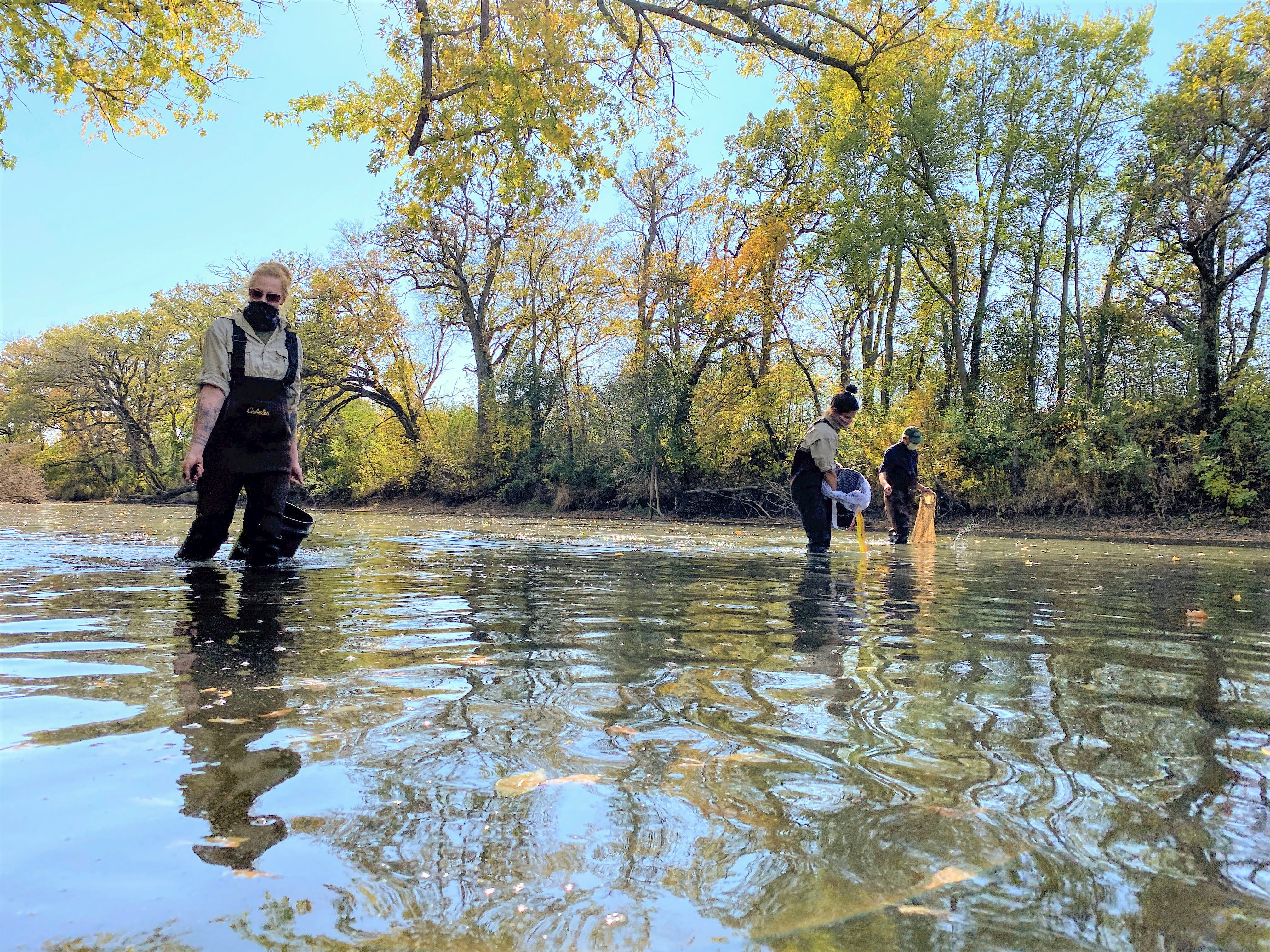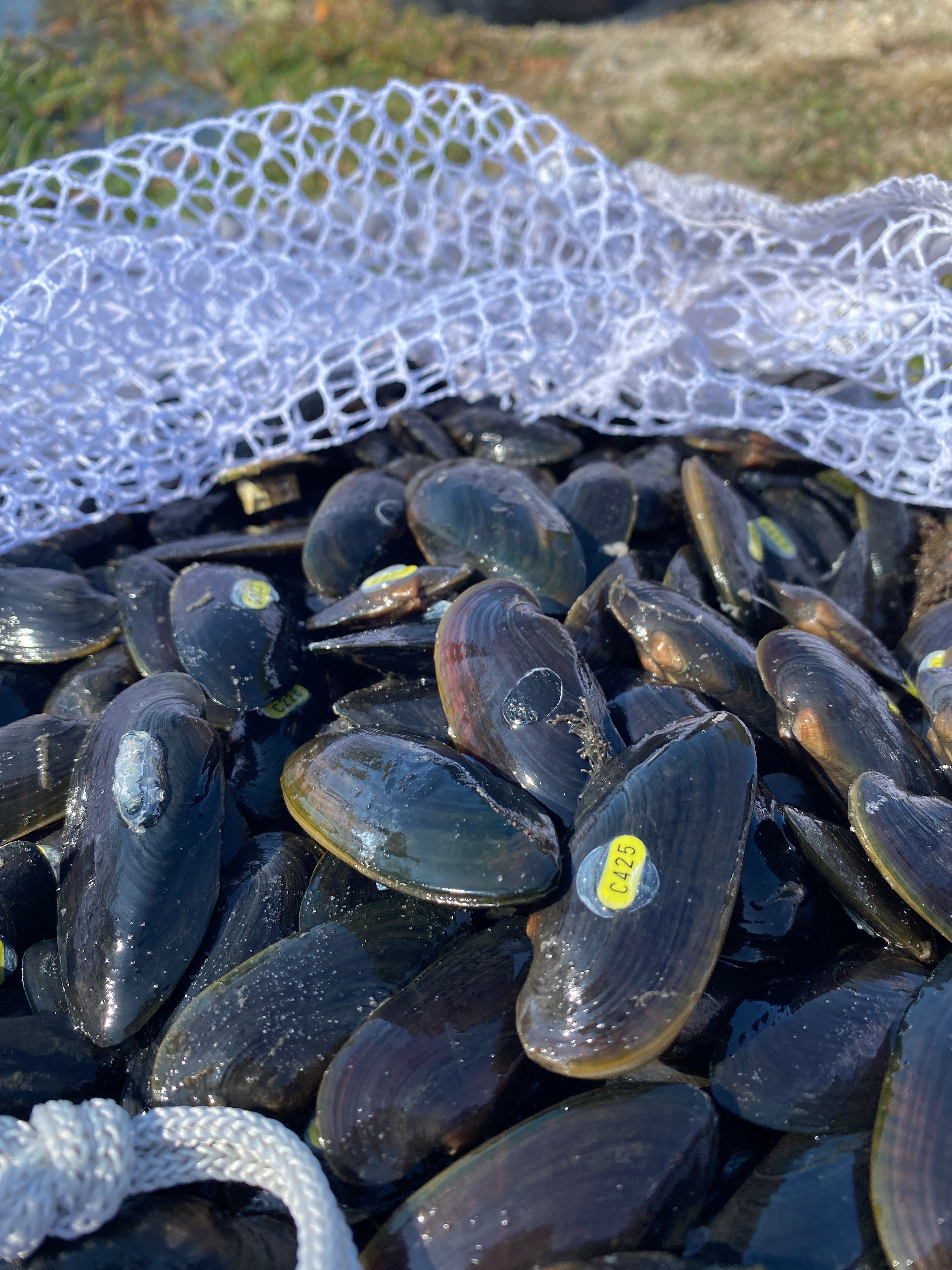DNR transplants over 3,700 mussels into Cedar
Published 6:50 am Wednesday, October 14, 2020
|
Getting your Trinity Audio player ready...
|
A year ago, about 1,500 native mussels were placed in Minnesota’s Cedar River.
Last week, more than double that number of native mussels joined them at three locations in what is hopefully the start of their revitalization along 21 river miles of the Cedar River along with its tributary streams. This stretch of river runs from Austin’s downtown dam to the next dam just across the border in Otranto, Iowa.


Mussel biologists from the Minnesota Department of Natural Resources spread mussels in the Cedar River last week. Photo provided
Mussel biologists from the Minnesota Department of Natural Resources, joined by a colleague from the Minnesota Zoo, placed 3,730 black sandshell mussels in the Cedar River State Water Trail in roughly equal amounts at each site in Mower County’s Austin and Lyle townships. The sites offer a diversity of habitats for researchers to study where mussels survive best.
“This really is about reviving the Cedar River and repopulating it with thousands of native mussels that will bring all sorts of benefits to the river. Mussels are like the coral reefs of the river,” said Madeline Pletta, a DNR mussels propagation biologist.
Pletta leads the mussels project started in 2016 in the Cedar River watershed – one of three chosen for this work in Minnesota by the DNR’s Center for Aquatic Mollusk Programs (CAMP) located along the Mississippi River in Lake City.
Mussels serve as filters in the river to support water quality, provide microhabitats for smaller aquatic creatures like invertebrates and stabilize the river bottom. DNR surveys, however, show the Cedar and other rivers in Minnesota’s southern one-third no longer support their historical assemblages of mussel species.
This was the DNR team’s second transplant in the Cedar River of black sandshells from Austin’s East Side Lake, where they had been growing in underwater, plastic totes that have holes to allow in water and nutrients. The first was in July 2019 with 1,500 black sandshells at the same three sites. Overall, the Cedar now has about 5,230 newly added mussels.
Minnesota Zoo mussels biologist and Austin native Ben Minerich provided 1,103 mussels, with the rest coming from the DNR’s totes in East Side Lake.
“Our juvenile mussels kept in East Side Lake have shown great growth and survival rates,” Pletta said. “As our program keeps growing, we’re confident East Side (Lake) will continue to be an essential location for juvenile mussels before their release into the Cedar River.”
DNR will monitor the mussels in the Cedar to see if they are reproducing, creating new populations and thriving overall in the river, Pletta said. Staff tagged the mussels, including some with a special tracking tag to help find them later.
Overall, the DNR hopes to restore seven species of mussels in the Cedar River, which means they expect to use East Side Lake for many more years. The lake now hosts 3,726 native mussels of four types: 1,504 black sandshells, 1,578 muckets, 635 threeridges and nine spikes.
Depending on the mussels’ growth in East Side Lake, the DNR anticipates most of them to be released in 2021 in the Cedar River, with the others released in 2022.
In total, the DNR has 5,088 juvenile mussels (1-year-old mussels) from the Cedar River Watershed in secondary systems, including 3,726 in East Side Lake and another 1,362 juvenile mussels at the Minnesota Zoo and the DNR’s fisheries facility in Waterville, Pletta said.




